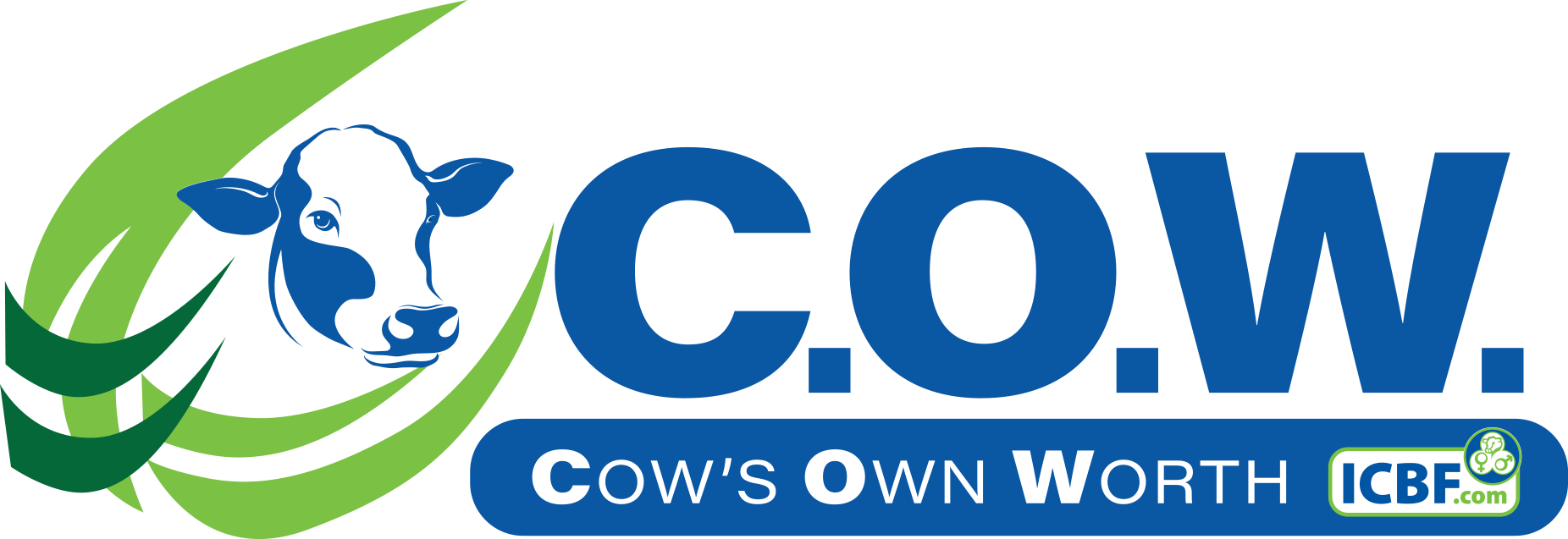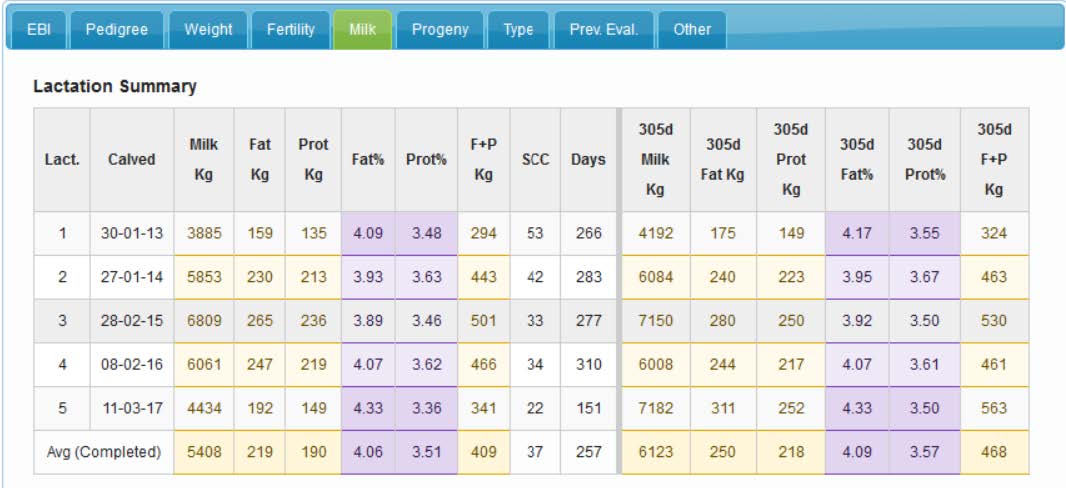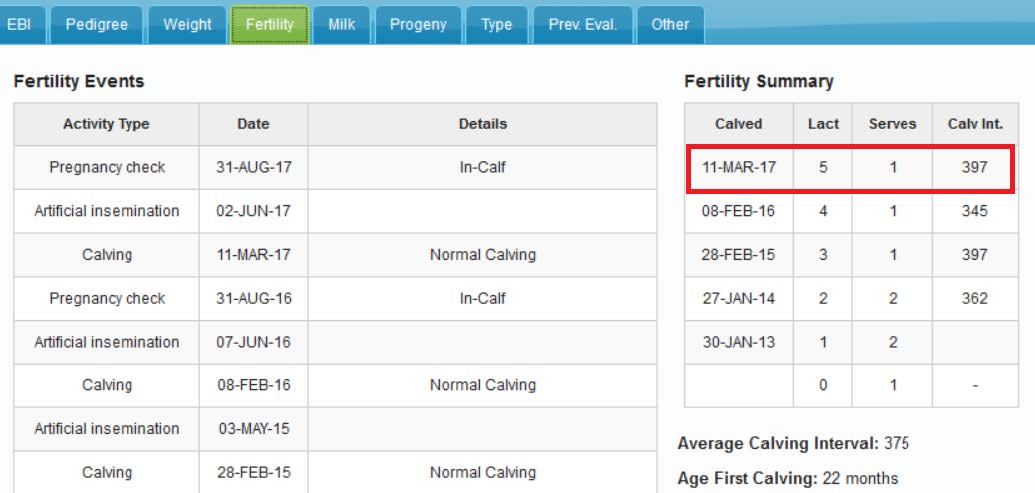Cow’s Own Worth (C.O.W.) is an award-winning culling support tool for Spring calving, and milk recording herds. The C.O.W. combines multiple sources of information to identify the expected profit potential for the remainder of every dairy female’s life. The ability to identify cows with the highest predicted future profit potential will have a substantial impact on herd profitability. Farmers make significant investments in data recording (e.g. calf, registrations, milk recording, inseminations, pregnancy diagnosis, and genotyping) but collating all these data sources into one value per animal is key to aid decision making.
The C.O.W. profile is live and updates instantly using all the information available to give a ranking of the herd. As data is recorded, animals are reranked accordingly. Cows will be ranked in order from the highest expected profit potential for the remaining lifetime to the lowest. You will find your best cows at the top of the screen. Cows marked as empty or for culling will automatically rank lowest.
How do we calculate profit potential?
The profit potential per female considers 1) profit within the current lactation, 2) expected profit from future lactations and 3) net replacement cost (including the salvage value from culling).
 Current Lactation: is the profit potential of the cow for the current lactation performance under the prevailing milk price. Traits included are milk yield, fat yield, protein yield, cull cow weight, milking speed, milking temperament, mastitis, lameness and somatic cell count and her most recent calving month where cows are penalised for later calving dates as well as high SCC. Expected milk production is based on both additive and non-additive (e.g., heterosis) genetic merit, as well as cow-centric effects (e.g., cow’s own milk yields from milk recording).
Current Lactation: is the profit potential of the cow for the current lactation performance under the prevailing milk price. Traits included are milk yield, fat yield, protein yield, cull cow weight, milking speed, milking temperament, mastitis, lameness and somatic cell count and her most recent calving month where cows are penalised for later calving dates as well as high SCC. Expected milk production is based on both additive and non-additive (e.g., heterosis) genetic merit, as well as cow-centric effects (e.g., cow’s own milk yields from milk recording).
Future Lactations: is the future profit potential of the cow over subsequent lactations should she remain in the herd. Future profit potential was also adjusted by the cow’s expected future survival, reproduction, and somatic cell count (SCC), as well as profit accruing from dairy female descendants. Future market prices and costs were used to estimate the performance value of traits including milk yield, fat yield, protein yield, cull cow weight, milking speed, milking temperament, mastitis, lameness, direct calving difficulty, maternal calving difficulty, calf mortality, progeny carcass conformation, progeny carcass fat, and progeny carcass weight. Future calving date probabilities were calculated given the current month of calving and genetic merit for calving interval. The profit differential for each month of calving using future market prices, relative to the base month of calving, February were used to rank cows. The probability of the cow surviving to subsequent lactations was also predicted based on the cow’s current calving date, her age and genetic merit for survival. The probability of the cow residing in a high, medium or low SCC group in the next lactation was calculated, given the SCC group in the current lactation, genetic merit for SCC, and age of the cow. The value of future daughter replacements was also taken into account.
Net replacement cost differential: is the savings in replacement costs net of cull cow salvage value based on genetic merit for carcass weight of the cow that would be retained if not culled. This component of C.O.W. also accounts for the fact that few replacements are required in the long-term when an older cow is culled because older cull cows would need to be replaced soon anyway.
Why is my cow ranked so low on the C.O.W. profle?
To understand a cow’s rank in your herd, first compare her C.O.W. value to other cows in your herd. For example, cow number 174 has a C.O.W. value of -206 which is calculated from the sum of her current lactation (-202), future lactations (-600) and net replacement cost (595). There are a number of contributing factors to the low current and future lactation performance.
1. Penalty for current calving date and expected future calving date.
2. Milk performance – reduced between parity 3 and parity 4. Previous performance, calving date and age taken into account.
3. Fertility performance – slipped a month from previous lactation. Genetic merit for fertility and age will also be taken into account for the fact that expected calving dates in the future could slip further. This cow could be at risk of not surviving too many future lactations if her calving interval increases.
4. Age of the cow – lower replacement cost compared to young cow, previous performance not as good as other cows in the herd, risks of having late calving dates and dropping out of spring calving system.
5. Genetic merit (EBI) is low.
How to make the most out of your C.O.W?
Prior to running the C.O.W. profile to make culling decisions, ensure that the most up to date information is recorded on your cows so that the most suitable candidates for culling will be ranked appropriately.
1) Milk recording: Milk recording is an essential component of the C.O.W. Milk recording provides the C.O.W. with the necessary information to adjust an animal up or down (i.e. permanent environment effects) compared to her pedigree (i.e., some sires produce better daughters and some produce poorer daughters). SCC also comes from milk recording, and will be used to rank the cows appropriately. Cows with high somatic cell count and reoccurring issues will be ranked lower.
2) Fertility recording: The current calving date or predicted calving date accounts for 18% of the inter-animal variability in C.O.W. Data from calving dates, inseminations, and pregnancy diagnosis are used to rank cows accordingly. Cows calving early will be rewarded, while late calving cows will be penalised. Empty cows will be ranked at the end of the profile.
3) Health recording: The C.O.W. receives somatic cell count information from milk recording, but other health trait events are not readily available. Recording mastitis, lameness or other treatment events will markedly improve the accuracy and relevance of the C.O.W. for that farm.
4) Mark for culling: Cow’s that have already been identified as a culling candidate can be marked for culling and will automatically drop to the end of the list with other suitable candidates to be culled.
5) Genotyping: Genotyped females will have a more accurate C.O.W. due to better predictions of the true genetic merit of the animal. It also provides certainty of parentage and correction of potential pedigree errors.
If you would like some help to start using the C.O.W. please call the HerdPlus office on 023 8820452 or email [email protected]





